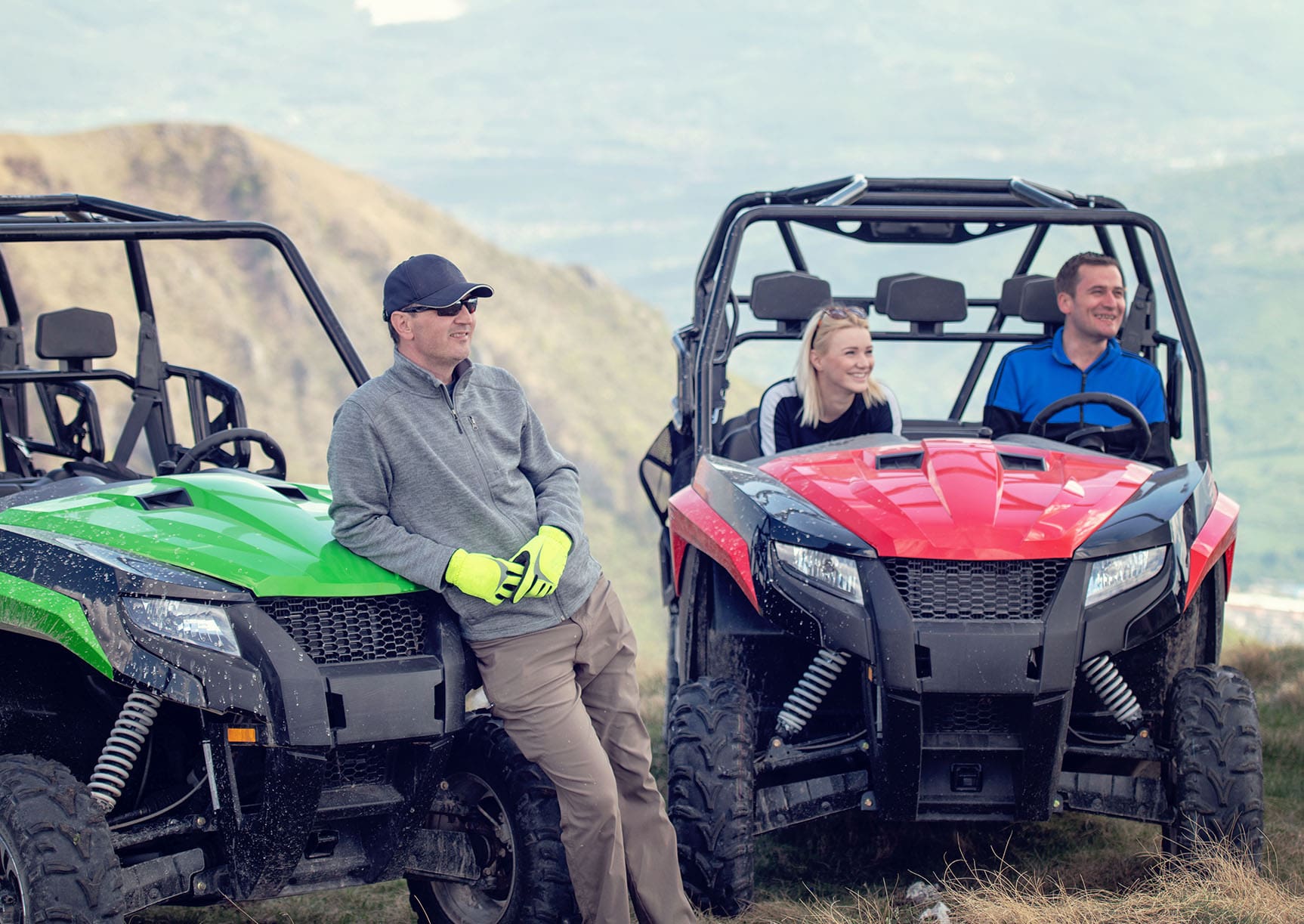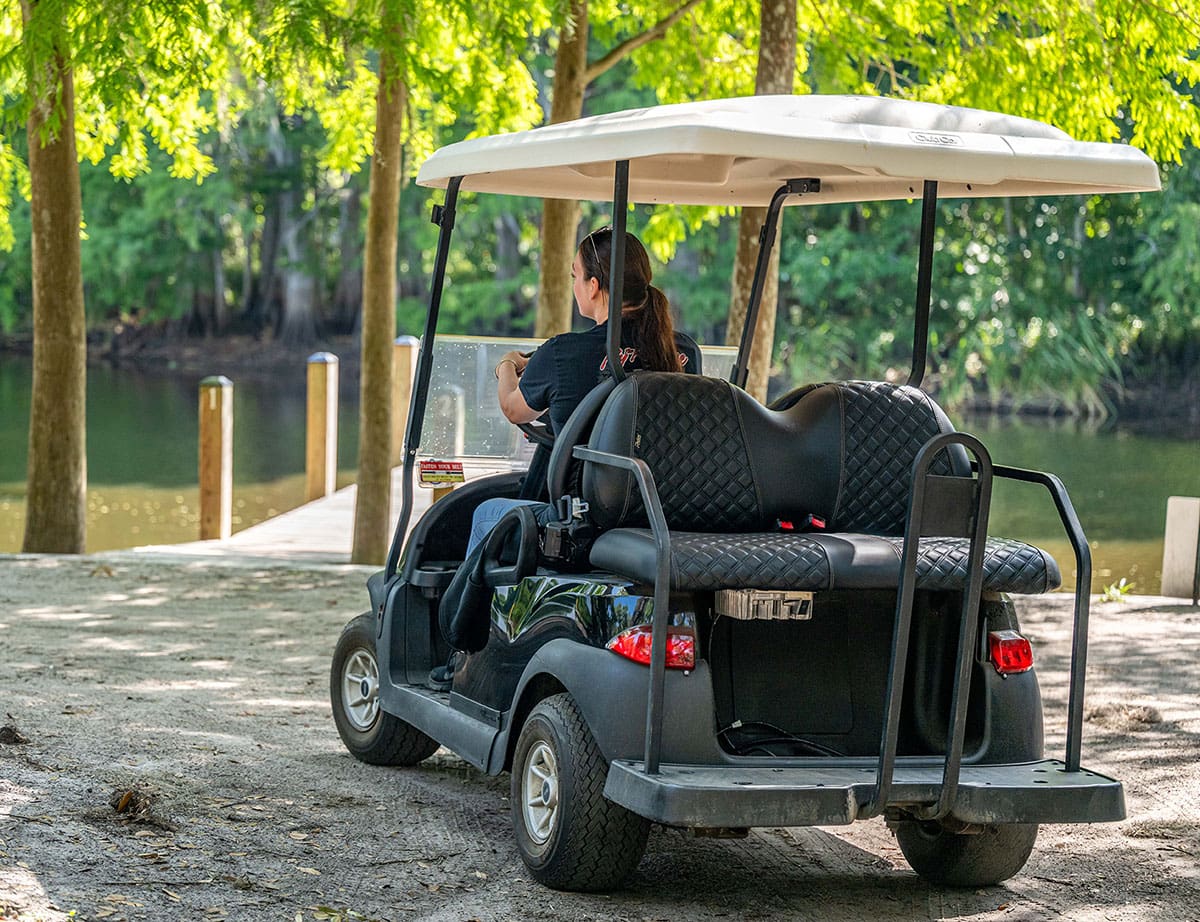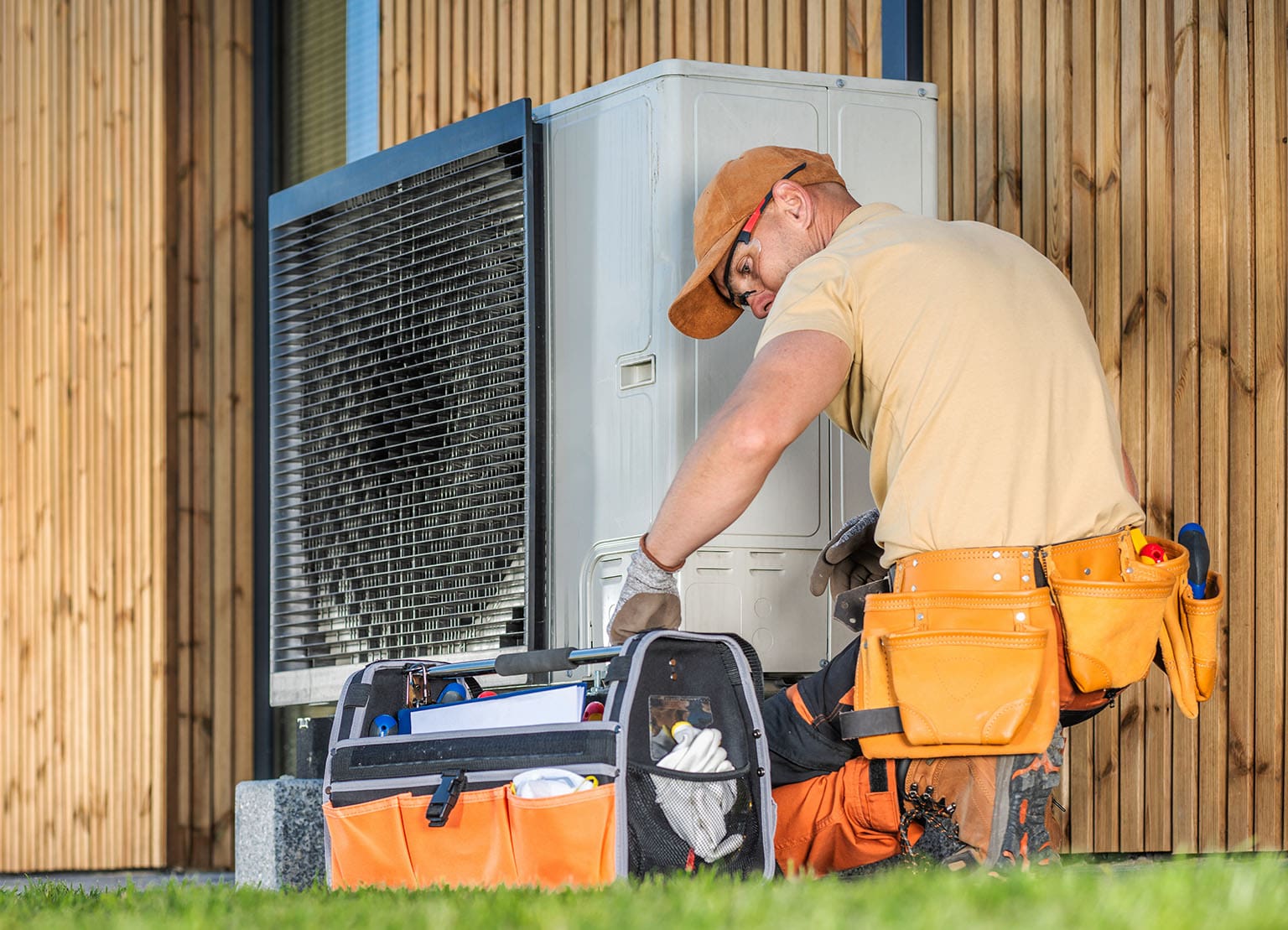If you own an ATV or a UTV, you already know how fun and versatile they are—perfect for trails, hauling gear, or getting around off-road.
But what if you want to take your ride from the trail to the street? That’s where things get a little more complicated.
Are ATVs street legal? Let’s look at how ATV insurance plays a role, and why the right coverage matters, especially if you’re thinking about bundling it with your auto policy.
What is the difference between an ATV and a UTV?
What is an ATV exactly?
ATVs are motorized all-terrain vehicles with four low-pressure tires and handlebar steering, designed for off-roading use on rugged terrain. They are usually single-rider and require straddle seating and handlebar steering.
What does UTV stand for?
UTVs are utility task vehicles; also designed for off-road use, but typically larger, have side-by-side seating, and are built for carrying passengers or cargo.
If you’re wondering about UTV vs ATV capabilities, think utility and stability (UTV) versus agility and speed (ATV).
So, can you drive an ATV or UTV on the street?
The short answer is: sometimes. Whether your ATV or UTV can legally drive on public roads depends entirely on your state and sometimes even your city or county.
Most states do not consider ATVs and UTVs street legal by default. They’re typically classified as off-highway vehicles (OHVs), which means they’re designed for use on private land, trails, farms, or work sites, not city streets.
| ATV/UTV Street Legality | State |
|---|---|
| Street legal | Arizona, Idaho, Iowa, Kansas, Michigan, Missouri, Montana, North Dakota, Oklahoma, Utah, Wyoming |
| Allowed with restrictions | Alaska, Arkansas, Colorado, Connecticut, Florida, Georgia, Illinois, Indiana, Kentucky, Louisiana, Minnesota, New Hampshire, New Mexico, North Carolina, Ohio, Pennsylvania, South Dakota, Tennessee, Vermont, Washington, West Virginia, Wisconsin |
| Not allowed | Alabama, California, Delaware, Hawaii, Maine, Maryland, Massachusetts, Mississippi, Nebraska, New Jersey, New York, Oregon, Rhode Island, South Carolina, Texas, Virginia, Washington D.C. |
For those states that do allow street use under certain conditions, these rules generally apply:
- Required modifications: You’ll likely need to outfit your vehicle with specific safety features—think of it like “upgrading” your ATV/UTV for the road. This often includes:
- Headlights and taillights so you’re visible day and night
- Turn signals and mirrors to signal safely and increase awareness
- A horn (yes, even your UTV needs a horn)
- A windshield in some jurisdictions, especially if you don’t wear eye protection
- Brake lights and functional brakes for safe stopping power
- Registration and licensing: Depending on your location, you’ll likely need to register your vehicle and get a specific off-road or on-road license plate. A few states may also require a valid driver’s license or learner’s permit. And in some areas, it’s illegal to operate an ATV or UTV if you’re under the legal driving age.
- Proof of insurance: In regions where street use is legal, insurance isn’t just recommended, it’s often required by law.
Be sure to check both local and state laws before taking your ATV or UTV on the road. Even in states that allow street use, there are specific rules you’ll need to follow, like observing lower speed limits, avoiding highways, riding only during daylight hours, or sticking to unpaved roads.
ATV/UTV insurance vs. auto insurance: What’s the difference?
It’s a common assumption: “I already have car insurance, so my ATV must be covered too, right?” Unfortunately, that’s not the case.
Your auto insurance policy doesn’t automatically extend to your ATV or UTV, even if you use it for occasional road travel. These vehicles fall into a completely separate category and require their own type of specialized insurance.
Here’s how the two differ:
- Auto insurance is designed for licensed passenger vehicles, including cars, trucks, and SUVs, primarily used on paved public roads. It won’t cover damages, liability, or theft related to an ATV or UTV.
- ATV/UTV insurance is tailor-made for vehicles designed for off-roading and trail use, with optional on-road protection in states where that’s allowed. It covers risks unique to these vehicles, including rough terrain, unpredictable environments, and lower visibility situations.
Without dedicated ATV/UTV coverage, you could face costly repairs, or worse, legal trouble, if something goes wrong.
What does ATV/UTV insurance actually cover?
Not all ATV/UTV insurance policies are created equal. A solid policy should offer a range of protections depending on how (and where) you ride. Let’s walk through the main features you should look for:
- Liability coverage
This is the foundation of any insurance policy. It covers bodily injury or property damage you may cause to others while riding. For example, if you accidentally crash into a fence or collide with another rider, liability coverage helps cover the repair bills or medical costs, so you’re not paying out of pocket. - Collision coverage
This pays for damage to your ATV/UTV if you’re involved in an accident—regardless of who’s at fault. Whether you hit a tree stump, roll your vehicle on rocky terrain, or crash into another vehicle, collision coverage helps cover the cost of repairs or replacement. - Comprehensive coverage
Think of this as “everything else” coverage. It protects your vehicle against non-collision incidents like:- Theft (yes, ATVs and UTVs are commonly stolen)
- Vandalism
- Fire
- Flood or storm damage
- Uninsured/underinsured motorist coverage
Let’s say you’re riding on a legal road, and someone hits you—someone who has no insurance (or not enough). This coverage steps in to cover your medical bills and damages when the other person can’t. - Medical payments coverage (Medpay)
Helps cover medical expenses for you and your passengers if you’re injured in an ATV or UTV accident, regardless of who’s at fault. This can include hospital bills, ambulance fees, and other related costs. - Coverage for accessories and upgrades
Have you added a winch, cargo box, LED light bar, or custom tires? Make sure they’re protected. Many policies offer accessory coverage so you’re not paying to replace custom upgrades out of pocket. - Towing and roadside assistance
Some policies include towing coverage if your ATV breaks down or is involved in an accident, especially helpful in remote or trail-heavy areas. - Agreed value coverage
For custom or high-end ATVs, you may be able to choose an agreed-upon value for your vehicle. In the event of a total loss, this ensures a fixed payout rather than a depreciated market value. - Coverage for other off-road vehicles
Many policies allow you to bundle or extend protection to other vehicles like dirt bikes, dune buggies, or side-by-sides. Be sure to ask what’s included.
Why bundle ATV/UTV insurance with auto insurance?
If you already have auto insurance, adding ATV/UTV coverage might seem redundant but depending on the insurer, bundling can come with valuable perks.
Bundling shows your loyalty, and in return, insurers often offer perks like:
- Simplified billing: One insurer, one bill, one renewal date. It’s much easier to manage multiple policies when they’re in one place.
- Multi-policy discounts: Some insurers offer savings of 10% or more by bundling any combination of insurances, like:
- Accident forgiveness: When you are a multi-policy customer, your first accident may not impact your premium, especially if you’ve been claim-free.
- Vanishing deductibles: Your deductible may decrease each year you go without a claim, potentially down to $0. Not all insurance providers offer this benefit, but many larger companies do, so be sure to ask.
- Priority claims processing: Bundled policies in good standing often come with faster claims handling, shorter customer service wait times, and access to a dedicated claims team or personal agent.
- Policy renewal guarantees: Some insurers promise not to drop long-time customers—even after a claim or infraction.
- Loyalty credits or rebates: Some multi-policy customers earn annual credits, cashback, or premium rebates for staying with the same company.
Bottom line? If you already have insurance for your home, car, RV, or motorcycle, it’s worth asking your agent about adding ATV/UTV coverage to the mix.
Ready to ride? Let’s make sure you’re covered.
Whether you’re riding backroads, hauling gear, or hitting the trails, you need the right ATV or UTV insurance. Shopping for coverage takes time, and every insurer has different rules, rates, and requirements. That’s where we come in.
At The Baldwin Group, we handle the legwork, so you don’t have to spend hours researching and comparing ATV and UTV insurance providers. Here’s what you get with us:
- Expert advice tailored to how and where you ride
- Consideration of any upgrades or accessories you’ve added
- Multiple quotes compared for you
- Coverage that fits your needs and budget
- Help navigating local laws and registration requirements
Let’s make sure your ride is protected the right way. Call The Baldwin Group at 813.939.5288 to speak with an advisor, or click here to get a quote online.
For more information
We’re ready to help when you are. Get in touch and one of our experienced Baldwin advisors will reach out to have a conversation about your business or individual needs and goals, then make a plan to map your path to the possible.
This document is intended for general information purposes only and should not be construed as advice or opinions on any specific facts or circumstances. The content of this document is made available on an “as is” basis, without warranty of any kind. The Baldwin Insurance Group Holdings, LLC (“The Baldwin Group”), its affiliates, and subsidiaries do not guarantee that this information is, or can be relied on for, compliance with any law or regulation, assurance against preventable losses, or freedom from legal liability. This publication is not intended to be legal, underwriting, or any other type of professional advice. The Baldwin Group does not guarantee any particular outcome and makes no commitment to update any information herein or remove any items that are no longer accurate or complete. Furthermore, The Baldwin Group does not assume any liability to any person or organization for loss or damage caused by or resulting from any reliance placed on that content. Persons requiring advice should always consult an independent adviser.






